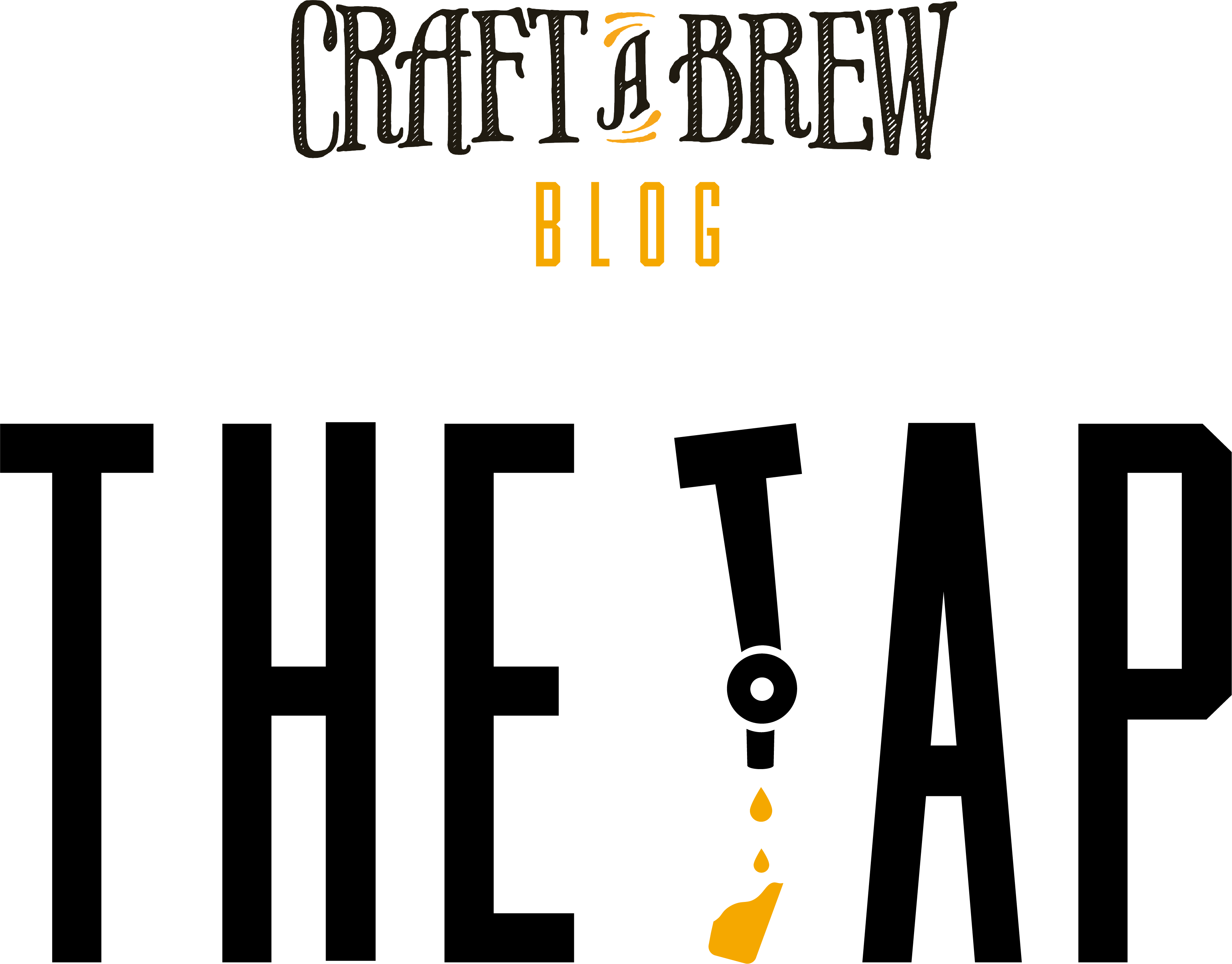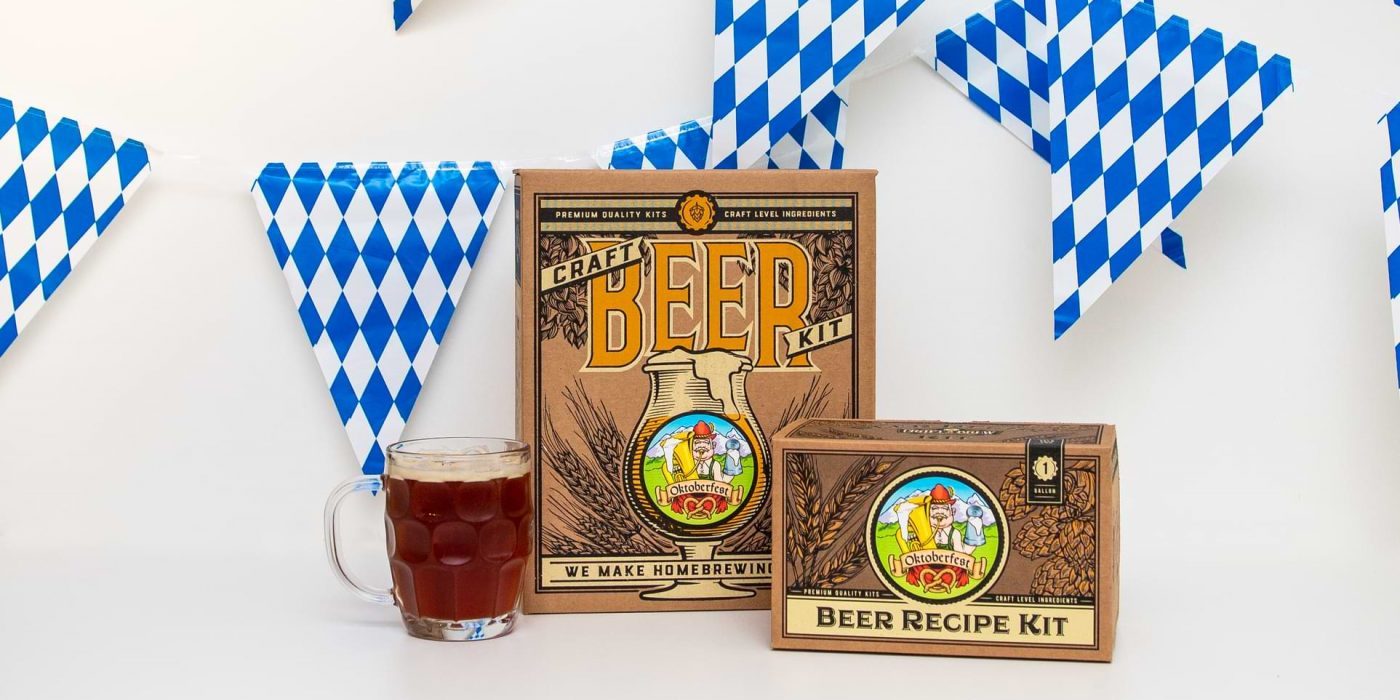
01 Oct How To Use Our Oktoberfest Beer Brewing Kit
Dust off your lederhosen and break out your stein, because Oktoberfest season is upon us. Though, with our Oktoberfest beer brewing kit, you can brew and enjoy this malty, crispy classic all year round.
A beer brewing kit that’s perfect for those who like “beer flavored beer,” Oktoberfest is malt-forward and balanced by subtle hop bitterness. It tastes like the beginning of fall, but is refreshing enough to drink in the middle of summer.
This style packs a lot of history into each stein, so let’s review Oktoberfest’s history – as a beer and as a festival – and discuss what goes into one of our best selling beer kits.
What’s in a name?
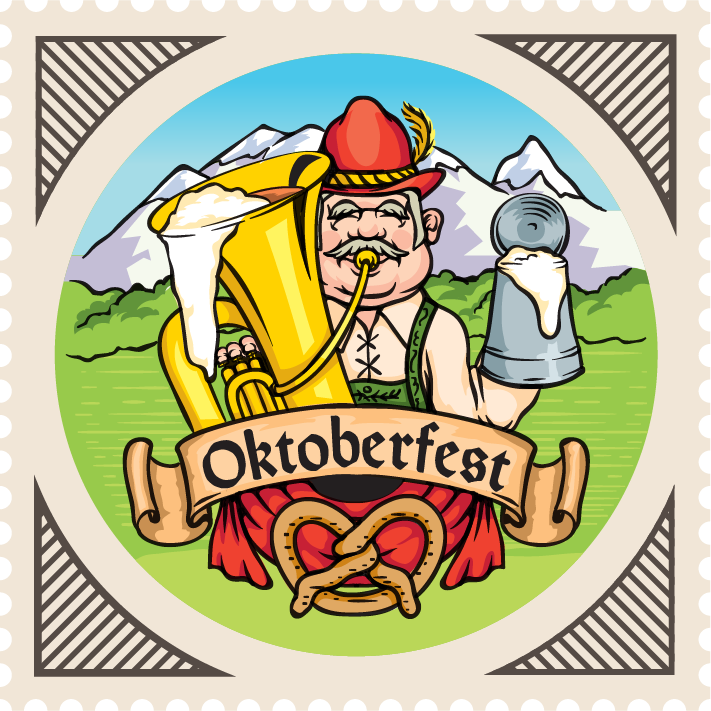
Often known interchangeably as Märzen (“March”) and Oktoberfest (a more recent name for the style that is synonymous with the annual beer festival in Munich each October), this beer style is a celebration of the changing seasons and a celebration of brewing. Oktoberfest was traditionally brewed in spring to signal the end of the traditional brewing season. Then it was stored in chilly Alpine caves during warm summers before being enjoyed in the fall.
Before industrial refrigeration was available, the beer brewing season was limited to the months between fall and spring. The Oktoberfest style relied on cold fermentation to create crisp, clean beer and to prevent spoiling.
Don’t have your own cold storage cave? No problem. Lucky for us, we don’t have to wait until the weather is just right to brew Oktoberfests anymore! With our easy to use Oktoberfest home beer brewing kit PLUS modern refrigeration every season is Oktoberfest season.
If you still want to brew the traditional way, you can still recreate the authentic Apline cave aging process (in days instead of months) with a technique called cold-crashing. Learn how HERE.
Who put the FEST in Oktoberfest?
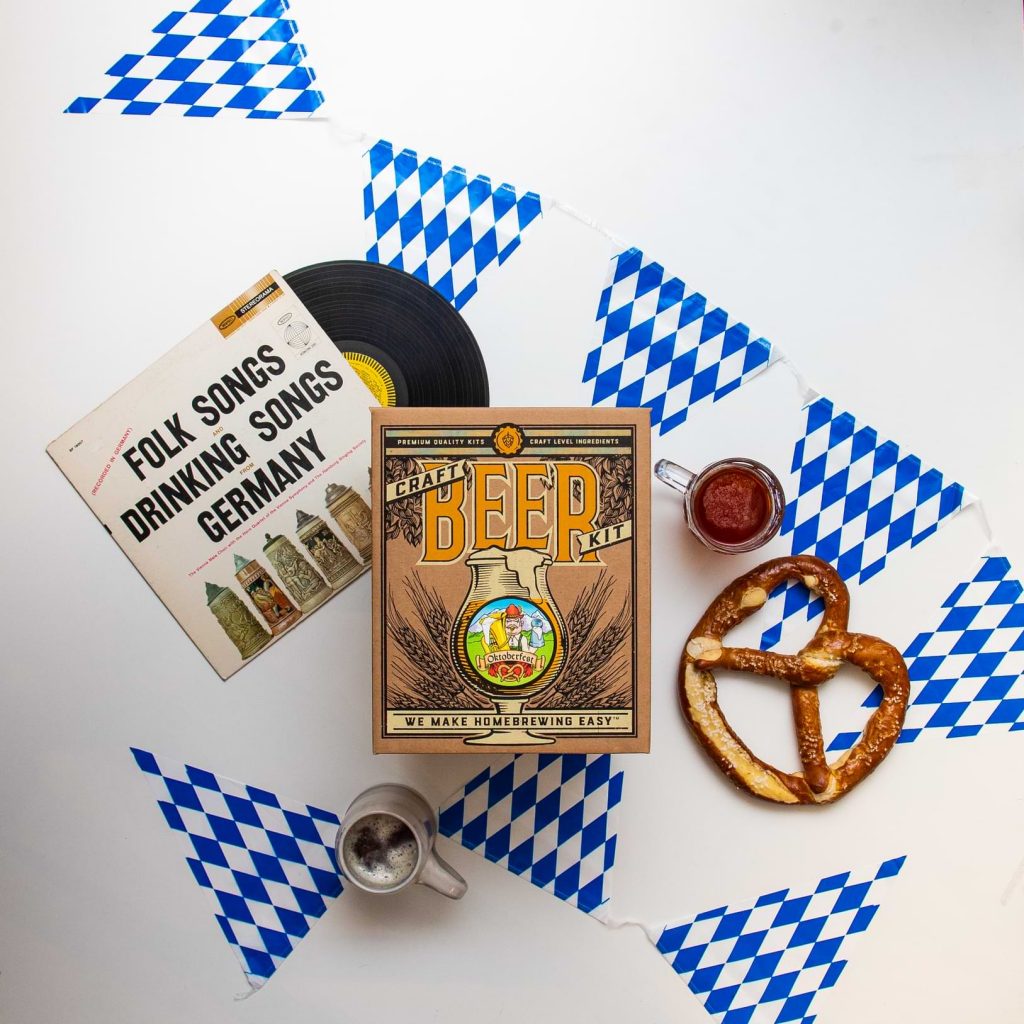
In October, in 1810, the King of Bavaria declared a two day festival to celebrate his son’s wedding. There was dancing, there were horse races, there was free food and, most importantly, free beer. What was meant to be a one time event was adopted by Bavarians the next year and transformed into an annual tradition.
For more than 200 years this German festival is still held in Munich. Rather than just a few days, the beer festival now lasts for two weeks beginning in late September and ending in early October.
Oktoberfest is one of the longest-running beer festivals in history and one of the most highly attended. Upwards of 6 million people attend annually. Only beer from Munich, from the “Big Six” breweries, is served at the festival. Augustiner, Hacker-Pschorr, Hofbräu, Löwenbräu, Paulaner, and Spaten each squeeze thousands of fest-goers into their brewery’s massive beer & food tents and pour millions of liters of their beer. Seriously. In 2018, almost 8 million liters of beer were served in just 16 days.
Only a few years out of the last 200 festivals were skipped throughout its long history; 2020’s Oktoberfest now included. This year will be the first time the festival has not been hosted in Munich since 1945.
The Anatomy of an Oktoberfest:
Back in the 1800’s, Oktoberfest beer was different from the style we’ve come to know and love today. The beer was much darker – closer to what you may know as a dunkel – due to drying the malts over direct heat. This made for darker color and more smoky flavor notes.
The Oktoberfest style was defined, and then redefined, by brewing technology. First with modern refrigeration, and once again with advances in the malting process (turning grains into malts for brewing). With more recent indirect heating, the malts used in Oktoberfests became lighter in color and flavor. These malts are responsible for the lighter, coppery red color we know today and the rich, toasted biscuit flavors.
An Oktoberfest will average have an average ABV (alcohol by volume) of 5 – 6%. The style is notoriously malty and hops are supporting characters – NOT the stars. They’re used sparingly for restrained hop character and balance.
Our Oktoberfest beer recipe kit, by the numbers:
You can generally determine whether a beer style will be one you will enjoy or want to avoid based on a few simple numbers. Look for the little scales like this on each home beer brewing page on our website. If you know what beers you like (and dislike), this little tool will help you choose the best beer kit for you!

Our Oktoberfest beer brewing kit is 5.5% ABV with a low-end 30 IBU – just enough hop character to balance those beautiful malts. It has an SRM of 10, which is pretty light, although this beer does have a beautiful red-ish hue.
What’s included in our Oktoberfest home beer brewing kit:
We offer our Oktoberfest Home Beer Brewing Kit year-round in 5 different kits. Whichever kit you choose will contain the ingredients to brew our Oktoberfest-style Ale.
If you need equipment:
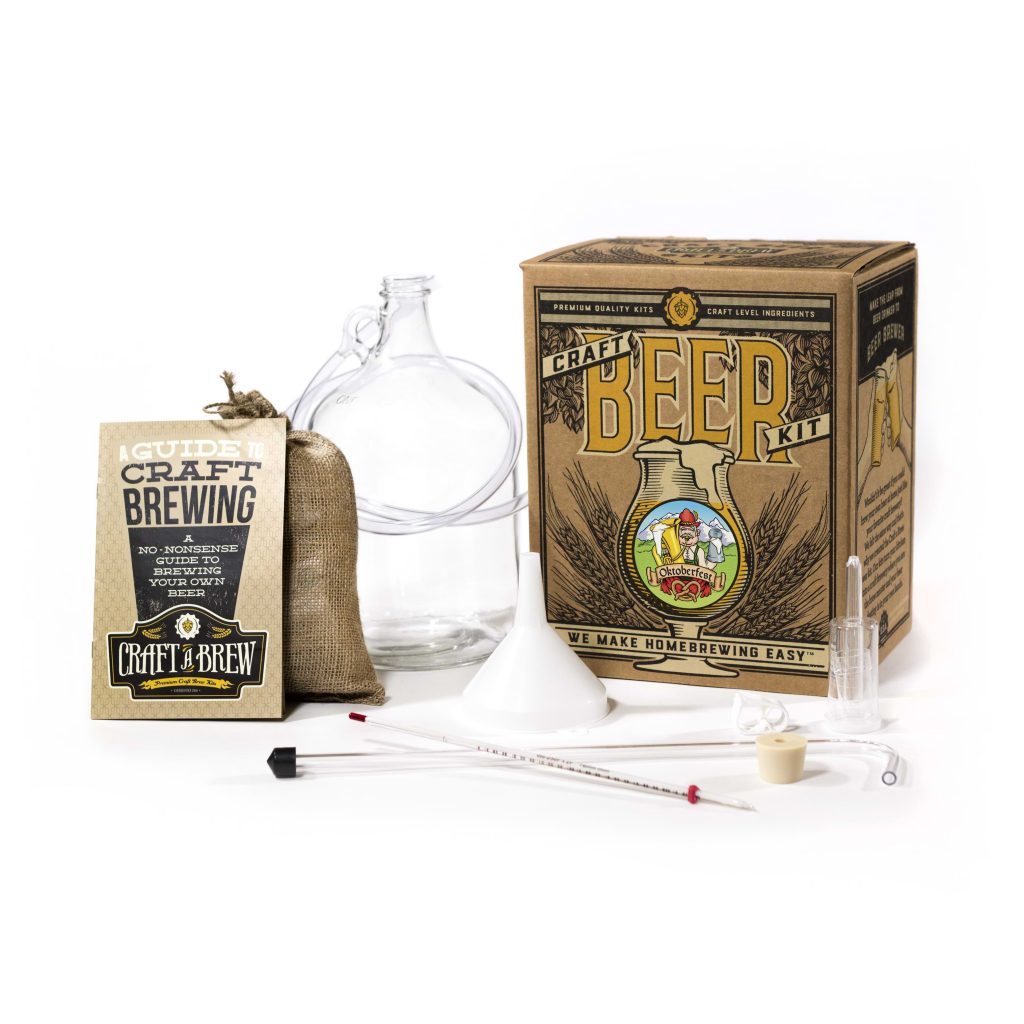
Equipment and ingredients needed to brew your own oktoberfest. Great for first time brewers.
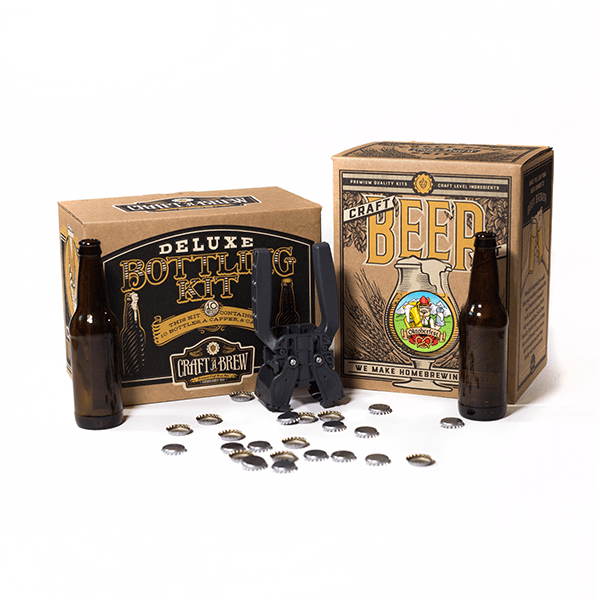
Includes an Oktoberfest 1 gallon home beer brewing kit PLUS a Deluxe Bottling Kit – perfect for gifting to first timer.
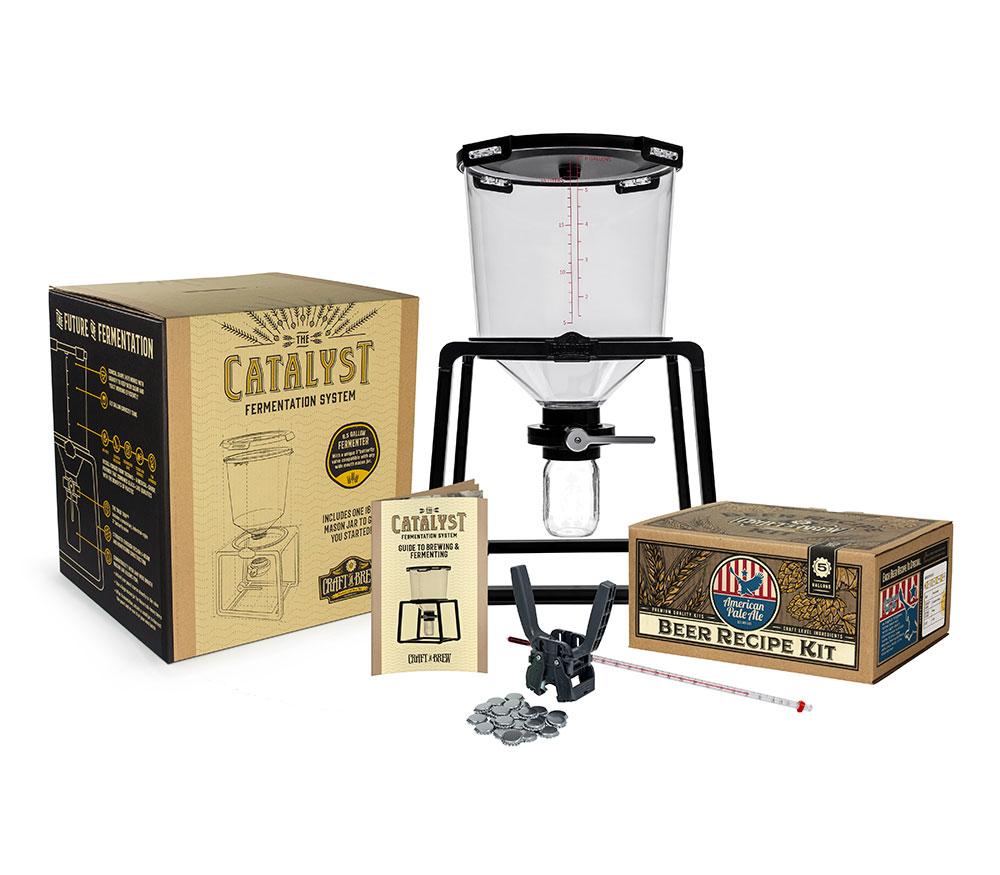
Equipment (including the catalyst fermentation system) and ingredients needed to brew your own Oktoberfest. Great for first time brewers who want to go big or go home.
If you already have equipment:
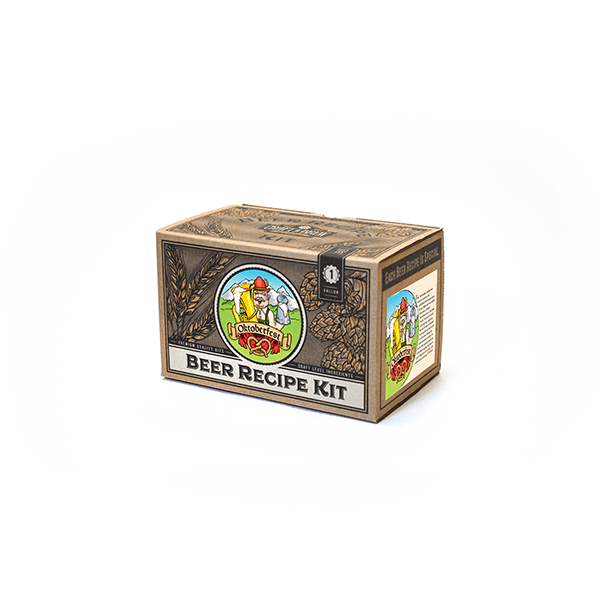
Just the ingredients needed to brew your own Oktoberfest. Great for brewers with a 1 gallon carboy
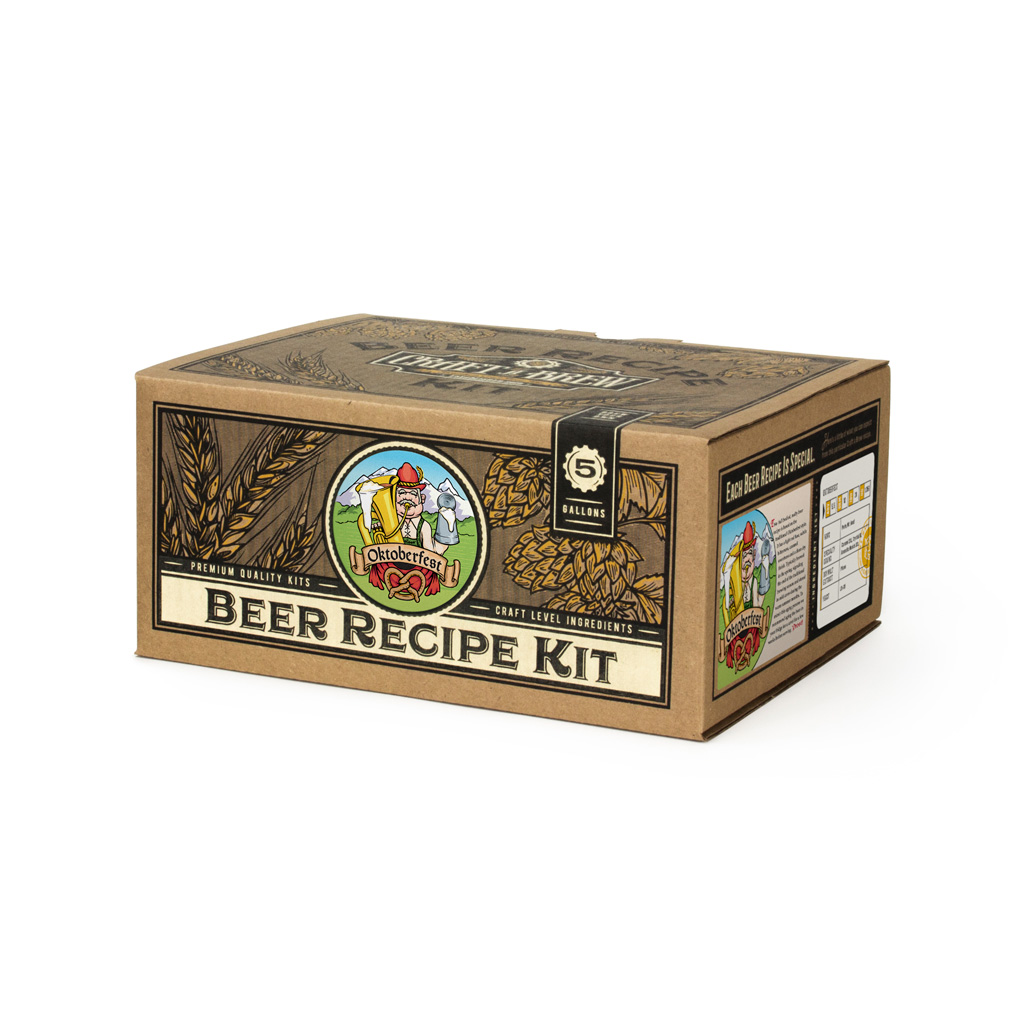
Just the ingredients needed to brew your own Oktoberfest. Great for brewers with a 5 gallon fermenter
The ingredients:
-
- Briess Pilsen Light Dry Malt Extract (DME) – we use high quality DME to save you time on brew day. DME is also known to be more precise, consistent beers while improving head retention and improving body.
-
- A blend of specialty grains, including:
- Aromatic Munich 20L – smooth, clean and rich maltiness
- Caramel 20L – described as having candy-like sweetness & caramel notes
- Crystal 60 – toasted bread and pronounced caramel flavor
- A blend of specialty grains, including:
-
- Two low-alpha acid hops (meaning they have low bitternig potential):
- German grown Perle – slightly fruity and spicy
- American grown Mt. Hood – bred from German Hallertau, a hop with noble heritage. Low bitterness, high herb & spice aroma
- Two low-alpha acid hops (meaning they have low bitternig potential):
Standard Ale Yeast (Fermentis US-05) – an crisp, clean fermenting American yeast strain that presents a solid foamy head in the finished beer
How to brew your own Oktoberfest:
Every Oktoberfest beer brewing kit will include instructions, but here’s an overview of the process, including some extra special tips along the way for making your Oktoberfest taste, and drink like your favorite store bought brew.
BREW DAY:
SANITATION:
Prepare at least one gallon of your preferred sanitizing solution and place this mix in a bucket. Sanitize your equipment by soaking the components for 60 seconds in the mix. Place the equipment on fresh paper towels.
BREWING:
- Pour as close to a gallon of water (if you’re brewing 1 gallon) or least 2.5 gallons of water (if you’re brewing 5 gallons) in your brew pot. Be sure to leave at least a few inches of room to prevent boil overs. Don’t worry, you can always add more water to reach the full volume AFTER brewing. Place your pot on the burner and turn up to high.
- While water is heating, place the specialty grains in the grain steeping bag (looks like cheesecloth) and tie off the top in a knot. DO NOT use the burlap bag in your kit to steep your grains. Wait until your water reaches 155° F, then steep the grains for 20 minutes while closely maintaining the temperature. After 20 minutes, remove bag and discard, making sure NOT to squeeze the excess water from the grains. This will release unwanted tannins.
- Bring your wort (unfermented beer) to a boil. Once you see the first boiling bubble take your pot off the burner & turn off the burner.
- Take out the Pilsen Malt Dry Malt Extract & slowly stir into the pot. Do not let it clump or stick to the bottom. Once all of the malt extract is completely dissolved, return the pot to the burner & turn the heat up to medium-high, bringing the wort to a slow rolling boil.
At this point you should be monitoring your brew pot at all times because wort can easily boil over and make a mess! If you do start to have a boil over, turn off the heat and blow on the foam.
- Once you slow rolling boil is achieved, add 1/2 of the Mt. Hood & Perle Hops Blend (Bittering) and start timing for a 60 minute boil.
- Add the other 1/2 of the Mt. Hood & Perle Hops Blend (Aroma) when there are 2 minutes in the 60 minute boil timer.
- After the 60-minute boil, turn off burner and remove the pot from heat.
- Now you’ll need to cool the wort down as quickly as possible in order to prepare it for yeast, which can only be added below 75 ° F. To do this, create an ice bath in your sink using a few pounds (or at least 1 bag) of ice and cold water. Place a lid on your brew pot to avoid contamination and then place the pot in the ice bath.
- While wort is chilling, sanitize your fermenting equipment (carboy or fermenter, rubber stopper, tubing, funnel, thermometer, etc.), along with the yeast packet and a pair of scissors.
If you have our 1 gallon Oktoberfest, mix HALF the packet of included sanitizer with water in a pitcher or bucket (save the rest for bottling day).
If you have our 5 gallon Oktoberfest you can use your preferred sanitizing solution.
Sanitize equipment by letting it soak for 60 seconds in the solution. Place on fresh paper towels to drip dry. Our sanitizers do not require rinsing.
- Verify that the wort is below 75° F with your sanitized thermometer. Pour your chilled wort into your now-sanitized fermenter (use the funnel if pouring into a carboy), leaving any thick sludge behind in the pot.
If you have a fine mesh strainer you can pour the wort through this in order to separate the spent hops from the wort.
- If you don’t have a full gallon (or full 5 gallons) in your fermenter, add cool water as needed to bring the volume up to the full 1 gallon (or 5 gallon) volume marker. Cut open your yeast packet and add the contents to your now-filled fermenter.
- Now you’ll need to aerate your wort to prepare it for yeast. An oxygen-rich wort helps yeast multiply.
If you have a 1 gallon carboy, take the sanitized rubber stopper and plug the top. The stopper will naturally stick out a bit. Take your clean thumb and place it over the top of the rubber stopper hole. Shake the carboy vigorously for over a minute.
If you have a 5 gallon fermenter, you can aerate the wort by sealing your fermenter and rocking back and forth for a few minutes or by using an aerating wand or other tools.
*Once your wort is aerated you should avoid agitating or shaking your fermenter any further in order to avoid oxidation, which can yield off-flavors in your finished beer.
- We recommend using a blow-off assembly during the first few days of fermentation. This prevents beer from overflowing in the early active stages of fermentation. Place the end of the flexible tubing about a 1/2 inch into the hole of the rubber stopper and the other end into the bottom of a half full glass of water. This allows CO2 to escape while keeping oxygen out.
THE NEXT 2 WEEKS: FERMENTATION
- Fermentation should begin within 12-72 hours and you will start to see a lot of activity, foam and bubbles of CO2. Fermentation activity will slow dramatically for the remainder of the 2 weeks, but yeast is still hard at work. When fermentation calms down after a few days, fill your air lock half way with water and insert into the stopper.
- Let your beer ferment for 2 full weeks in a cool (60-75° F) dark place before bottling. Fermenting at too cold a temperature can delay or slow down the fermentation process.
*OPTIONAL STEP: COLD-CRASHING:
To mimic the Bavarian tradition of aging Oktoberfests in cool Alpine caves, try this technique. This technique not only improves the flavor, giving it a crisp & clean mouthfeel, but it also improves the clarity.
Cold crashing is quite simple. After your Oktoberfest is finished fermenting, store your carboy in the fridge for 3-5 days. Keep the airlock on.
During this time, yeast and particulates floating in suspension will begin to drop out of suspension and settle at the bottom of the fermenter. It’s simple sediment separation.
After 3-5 days, gently bring the carboy out of the fridge so you don’t stir sediment back into the beer. Let the carboy stand at room temperature for 24 hours. Then it’s time to bottle!
BOTTLING DAY:
We recommend using swing top bottles, the same ones that Grolsch® beer is bottled in. You can sometimes ask for extras at a bar or just go buy two six-packs, empty (drink), and then use those. Another option is saving “pry off” bottles and using our Capping Kit.
We also have a Deluxe Bottling Kit that includes bottles.
Try practicing siphoning with just water before you bottle to ensure no beer is accidentally spilled. Having a friend to help bottle your beer will make the job much easier.
- Rinse your bottles with warm water to remove any dust or sediment from previous beers.
- Sanitize your bottles, racking cane, tubing and a spoon for mixing.
If you have our 1 gallon Oktoberfest, mix the remainder of the included sanitizer packet with warm water in a pitcher or bucket.
If you have our 5 gallon Oktoberfest you can use your preferred sanitizing solution.
Sanitize equipment by letting it soak for 60 seconds in the solution. Place on fresh paper towels to drip dry. Our sanitizers do not require rinsing.
- Now it’s time to mix your priming sugar solution. This sugar & water mixture gives the remaining yeast fuel to carbonate your beer in bottles.
For a 1 gallon Oktoberfest, mix exactly 2 Tablespoons of white table sugar and 1.5 cups of water.
For a 5 gallon Oktoberfest, mix exactly 2/3 cup of table sugar and 2 cups of water.
Heat on medium-high and stir in the sugar until fully dissolved. Boil for 5 minutes then cover and let cool.
- Once the pot and sugar water are completely cool it is now time to siphon the beer from your fermenter into this pot (if bottling 1 gallon) or a bottling bucket (if bottling 5 gallons). This transfer ensures that the sugar properly mixes with your beer & helps leave sediment behind in the carboy.*
To do this, get a bowl of fresh, clean water; dunk your tubing into the water (with clamp open) and let the tubing completely fill with liquid. Next close the tubing clamp and attach the non-clamped end to the racking cane, this will be your siphon starter. **See illustration**
*This step, and any siphoning, is not necessary if you’re using the Catalyst, our conical fermenter. You can transfer the priming sugar directly into the Catalyst & stir gently to mix.
- Insert the racking cane into the fermenter making sure the end is far enough away from the sediment at the bottom so as not to suck it up. Place the clamped end as low as you can and unclamp. This will start the flow of beer into your tubing. Use a glass to catch the water and clamp the tubing once the beer starts to freely flow out the end.
** Siphons are much easier with a friend to help. OR you can try a mini auto-siphon. With a few pumps, this tool will start the flow for you.
- Transfer all of the beer into your pot with the now-cooled sugar water. Mix gently and thoroughly with a sanitized spoon.
- Next, repeat steps 19-20 in order to start a siphon from the pot into the bottles. Fill the bottles slightly higher than where the neck starts, cap and repeat.
THE NEXT 2 WEEKS: CONDITIONING
- Store the bottles in a warm dark place for two weeks to let the beer condition and carbonate.
- After 2 weeks at room temperature you can refrigerate, drink & enjoy!
*Some beers will benefit from some extra aging. If there are any noticeable “off flavors” present then it is a good idea to let the beer age for another 1-2 weeks.
For an overview of the brewing & bottling processes, view our videos HERE.
Serving Tips:
BEST SERVED IN:

A Stein
BEST SERVED WITH:

Bratwurst

A Giant Pretzel

& Lederhosen
Commercial examples:
Thirsty after reading all that? Try some of our favorite commercial Oktoberfest beers:
-
- Sam Adams Octoberfest
- Bell’s
- Victory Festbier
- Left Hand
- Sierra Nevada
- Hofbrau
